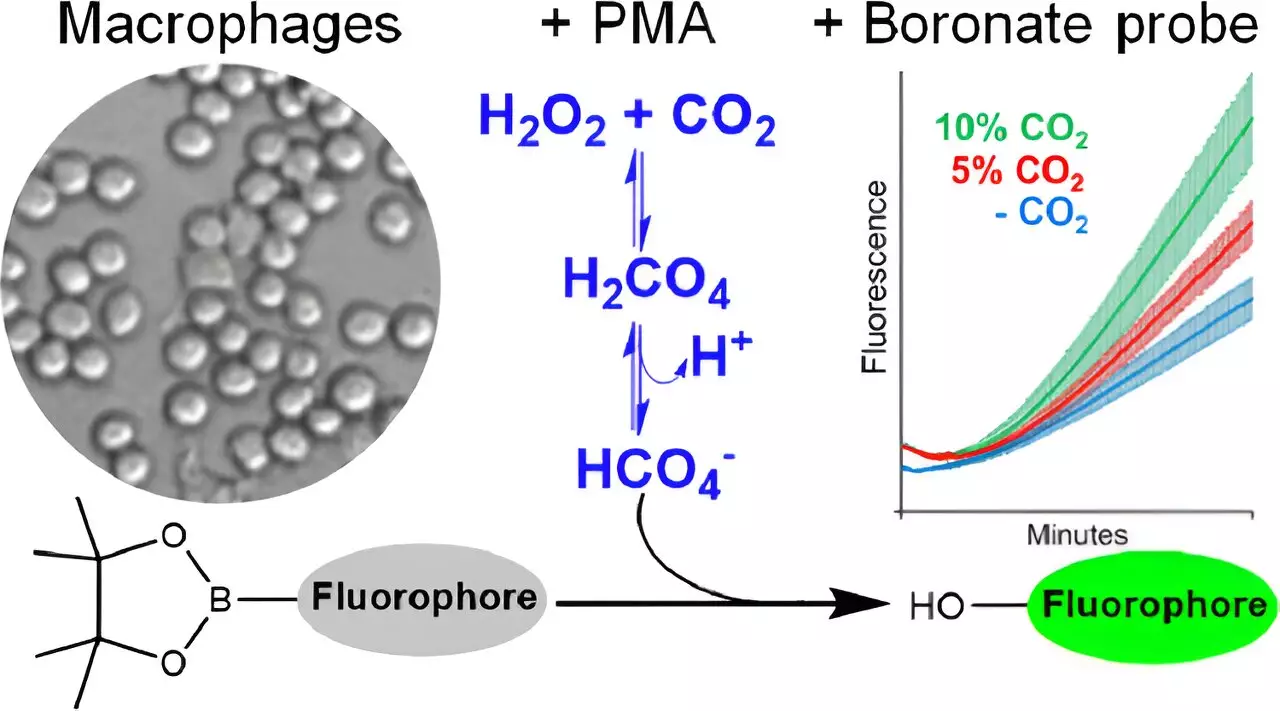As the planet grapples with rising levels of atmospheric carbon dioxide (CO2), the implications extend far beyond climate change. Increasing evidence suggests that excess CO2 can impact cellular function, presenting potential hazards to human health. Notably, the interaction between CO2 and hydrogen peroxide (H2O2)—a critical molecule in various biological processes—results in the formation of a powerful oxidant known as peroxymonocarbonate. This chemical not only plays a role in cellular adaptive responses but may also contribute to cellular dysfunction, highlighting the urgency of understanding its biological significance.
Ohara Augusto, a prominent researcher at the University of São Paulo’s Chemistry Institute, emphasizes the growing recognition of peroxymonocarbonate within scientific discourse. He notes that despite its long-known existence in chemistry, the detection of this molecule within living cells had remained elusive until recently. The connection between elevated CO2 levels and specific physiological problems, alongside a lack of comprehensive understanding of CO2 toxicity, underscores the need for further exploration in this field.
In a groundbreaking study published in the journal Chemical Research in Toxicology, Augusto and his team unveiled a novel approach to detect peroxymonocarbonate within cells. This research signifies an important milestone, as it not only introduces methods for identifying peroxymonocarbonate but also encourages discussion regarding the overlooked role of CO2 in redox signaling.
The study utilized fluorescent molecular probes to illuminate the presence of peroxymonocarbonate, driven by an enzyme reaction that produced stable concentrations of hydrogen peroxide. By measuring fluorescence from boronate probes—known for their reactivity with a variety of oxidants—the researchers were able to differentiate between various reactive species, including peroxymonocarbonate. Activating macrophages, a type of immune cell, provided evidence that CO2 influences the generation of peroxymonocarbonate specifically, while ruling out the production of other oxidants such as peroxynitrite and hypochlorous acid.
With this method, researchers can now correlate observed cellular effects, such as increased protein oxidation, with peroxymonocarbonate’s role, which was previously considered untraceable due to low precursor concentrations and slow reaction rates.
While the detection of peroxymonocarbonate is a significant achievement, its biological role remains complex. Originating from both carbon dioxide and hydrogen peroxide, this compound operates in a delicate balance within cellular systems. Under slight stress conditions, cells adapt by utilizing oxidants like peroxymonocarbonate to trigger protective responses, such as the expression of antioxidant genes.
However, excessive formation of oxidants can lead to irreversible cellular damage, revealing a duality in the function of peroxymonocarbonate and its precursor CO2. Augusto articulates that this understanding of redox signaling represents a robust protective mechanism—essentially a fine-tuned alarm system that helps the cell navigate and respond to varying levels of oxidative stress.
From a broader perspective, the implications of CO2 in cellular biology extend to gene expression modulation, particularly in the context of inflammation pathways. The interplay between CO2, peroxynitrite, and protein modifications such as nitration and carbamylation underscores a complex biochemical landscape where CO2 acts as more than just a metabolic byproduct.
Moreover, the potential of peroxymonocarbonate as an intermediary in the harmful effects linked to increased CO2 levels in human bodies introduces pressing questions about the health repercussions of chronic exposure to elevated CO2. Although research continues to evolve, the biological oxidant’s wider effects demand attention, particularly as urban environments approach critical CO2 thresholds.
The fresh findings presented by Augusto and his colleagues pave the way for future inquiries into the mechanisms by which peroxymonocarbonate contributes to cellular responses. A more in-depth investigation into its pathological implications, alongside the exploration of non-redox actions of CO2, presents a promising avenue for understanding how atmospheric changes influence human biology.
As public health policies increasingly reckon with environmental factors, understanding the intimate relationship between CO2 levels, cellular processes, and health outcomes becomes paramount. The advancement of detection methods not only illuminates previously darkened aspects of biochemical research but also has the potential to guide clinical practices in dealing with diseases linked to oxidative stress and inflammation.
The study of peroxymonocarbonate and its interactions offers a compelling glimpse into the intricate web connecting atmospheric science to human health, urging both scholars and practitioners to expand their perspectives on the impact of rising CO2 levels.



Leave a Reply